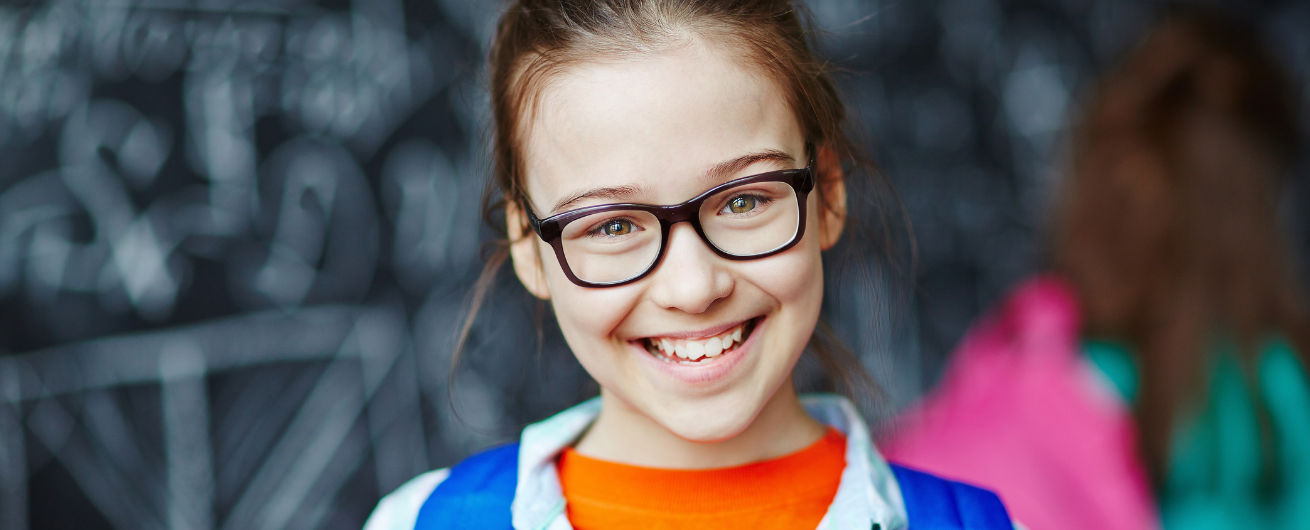Children’s Eyewear
Why We're Different
It’s confusing. Every optical store claims they specialize in children’s eyewear. What does that mean? Most of the time it simply means they carry a few dozen children’s frames. At Eyeglass House we have been fitting children’s eyeglasses since we started out in 1990.
For over 20 years we have been working closely with leading pediatric ophthalmologists from Long Island, Manhattan, and Westchester. Most eyeglass stores will think your child is simply nearsighted or farsighted, we know better. We will look at your child’s prescription and interpret their visual needs, and then custom fit them with the proper size frames from our selection of over 350 kid’s frames. And don’t worry about how your child will look, our opticians will make sure to have the latest and coolest styles for your child to wear.
All of our New York State licensed opticians are parents, so we understand your anxiety about your child having to wear eyeglasses. After dispensing your child’s glasses we will help you with proven techniques to get your child to wear their glasses.
Lenses
While the appearance of your child in their new frames is very important to you, lenses for those frames are important to us. Lenses will always be made from impact resistant polycarbonate or Trivex. They will always be made the thinnest they can so magnification and weight will be reduced to a minimum. Anti-reflective coatings, scratch resistance coatings, and transitions are all available and usually recommended.
Childrens Eyeglasses
Almost 80% of what a child learns in school comes to him visually. Impaired vision can affect a child’s development by limiting both the information he is exposed to and his range of experiences. Buying all the right school books and supplies is useless without the most important learning tool of all: healthy eyesight.
Your child may have already told you that they are having trouble seeing, or will exhibit such symptoms as squinting, holding a book very close to read, complaining of headaches, rubbing his eyes or using a finger to follow along while he’s reading. But do not wait for he or she to display symptoms of poor vision or to tell you about the problem before taking him to an eye doctor. There might not be any symptoms, and your child may not even be aware that they have a problem because they may not know what they’re supposed to be seeing.
If you are not sure how often your child should get a comprehensive eye examination, here’s what the American Optometric Association recommends: Children should have their first eye examination by the age of 6 months. A follow-up examination is required by age three. At age five or six, just before starting school, take your child to the eye doctor for another thorough check-up. School-age children need an eye examination every two to three years after age five or six if they have no vision problems. If your child requires eyeglasses or contact lenses, however, schedule visits once every 12 months (or according to the eye doctor’s recommendations) in order to keep the prescription current.
Children need to wear glasses for different reasons
· Myopia ("near-sighted") - Your child can clearly see objects that are close, but needs glasses to clearly see objects that are far away. Normally, a child will not outgrow being near-sighted. In fact, stronger glasses may be needed until the child is 12 to 14 years of age or possibly longer.
· Hyperopia ("far-sighted") - Hyperopia is normal in children and does not require glasses. However, if the hyperopia is severe, your child's eyes will have to work harder than normal to focus on close objects.
· Accommodative Esotropia - Your child has excessive hyperopia which causes his or her eyes to cross. Wearing glasses will control the "crossed eyes."
· Astigmatism - Your child's cornea (front part of the eye) is oval-shaped rather than round. This causes blurred vision which can be corrected with glasses.
· Anisometropia - The two eyes have different refractive powers which may cause poor vision in one eye. Glasses help by individually correcting for this difference.
